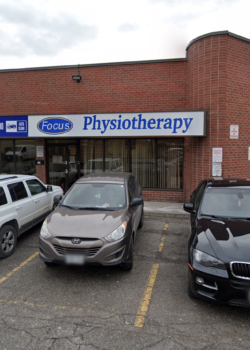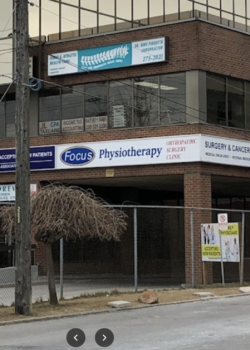What is Sciatica?
Sciatica refers to pain that radiates along the path of the sciatic nerve, which benches from your lower back through your hips and buttocks and down each leg. Typically, sciatica affects only one side of your body. Sciatica most commonly occurs when a herniated disc, bone spur on the spine or narrowing of the spine compresses part of the nerve. This causes inflammation, pain and often some numbness in the affected leg.
Imagine the sciatic nerve as the main highway that connects your spinal cord to your back leg muscles and foot muscles, also providing sensation to your thighs, legs, and the soles of your feet. Now, when there’s an obstruction or issue on this highway, traffic (or nerve signals) gets disrupted, resulting in what we commonly term as ‘sciatica’.
This nerve disruption can lead to a spectrum of discomforts. For some, it’s an occasional nuisance causing stiffness or numbness. For others, it’s a sharp, burning, constant pain throughout, or even excruciating discomfort that makes mundane tasks a significant challenge.
It’s vital to understand that sciatica is not a diagnosis but an indication of another problem. Getting to the heart and nerve roots of that problem is crucial for effective treatment and relief.
What are Sciatic Nerve Pain Symptoms?
Symptoms of Sciatica include:
Sharp Pain: Often described as a sharp shooting pain that starts in the lower back or buttock and travels down the leg. The pain might be intermittent or persistent.
Numbness: A tingling or pins-and-needles sensation, especially in the legs or feet. It may feel like a limb has “fallen asleep.”
Muscle Weakness: Difficulty in moving or controlling the leg, which might manifest as stumbling or struggling to get up from a seated position.
Burning Sensation: An intense burning feeling typically along the nerve pathway, usually exacerbated by prolonged sitting or standing.
Hip Pain: Some individuals experience a deep and dull ache in the hip area, which can be mistaken for general hip discomfort.
Lower Back Pain: Though less common, some people with sciatica may experience a dull ache or pain in the lumbar area.
Each individual’s experience with sciatica can be unique, and sciatica patients symptoms can range from mild to severe. It’s essential to consult a professional for an accurate diagnosis.
What Causes Sciatic Nerve Pain?
At the heart of sciatic pain is some form of pressure or irritation on parts of the sciatic nerve. However, the causes of this pressure nerve irritation are varied. Understanding these can help tailor treatments effectively.
Herniated or Slipped Discs: The spinal column is made up of individual bones called vertebrae, cushioned by discs. If a disc slips out of place or herniates, it can press on the sciatic nerve. This is among the most common causes of sciatica.
Lumbar Spinal Stenosis: A narrowing of the spinal cord in the lumbar region can cause pressure on the nerve, leading to sciatica.
Piriformis Syndrome: The piriformis muscle is located deep in the buttock, and the sciatic nerve runs beneath it. If this muscle spasms or becomes tight, it can put pressure on the nerve, leading to sciatic symptoms.
Spondylolisthesis: A condition where one vertebra slips forward over another one below it, potentially compressing the nerve.
Tumors: Though rare, growths or tumors within the spine can compress the sciatic nerve.
Trauma: Accidents, falls, or injuries can injure the lower back, leading to sciatic pain. Even surgeries in the region, if not done carefully, can be a cause.
Pregnancy: The added weight and pull on the spine can cause changes in the spine and pelvis, leading to sciatica.
Age, obesity, prolonged sitting, diabetes, and occupations requiring carrying heavy loads or driving can increase the risk of developing sciatica.
It’s crucial to pinpoint the cause for excruciating pain and tailored treatment. Not all sciatic pain is the same, and neither should the approach to relief be.
4.9 Stars Reviews
Over 1000+ Reviews


Insurance and Payment Options
We collaborate with most major insurance providers. Flexible financing and payment plans are also available to ensure that everyone has access to the care they deserve.
Why Choose Focus Physiotherapy for Sciatica Treatment Toronto?
Choosing the right physiotherapy clinic can be the difference between a quick recovery and prolonged discomfort. At Focus Physiotherapy, we prioritize your well-being, ensuring you get the best care possible. Here’s why you should consider us as your first choice:
Multi-location Accessibility: We have established our presence in six strategic locations all over the Greater Toronto Area. No matter where you reside in GTA, there’s a Focus Physiotherapy clinic near you. Our locations include:
State-of-the-Art Facilities: All our clinics are equipped with the latest physiotherapy equipment and tools. Whether you’re visiting our Brampton or Downtown location, expect consistent, high-quality care.
Unified Therapeutic Approach: While each clinic possesses its distinct charm, our therapeutic approach remains consistent. Inspired by industry leaders like Mike Reinold and Tim Fraticelli, our methodologies blend traditional techniques with modern research-driven practices.
Customized Treatment Plans: Every individual is unique, and so should be their treatment. Our trained professionals evaluate your specific needs and craft a recovery plan tailored just for you.
Experienced Staff Across Locations: We take pride in our team of therapists who bring years of experience to the table. Our hiring process is rigorous, ensuring only the best serve you, regardless of the clinic you choose.
Easy Transfers Between Locations: Need to switch clinics due to a change in residence or workplace? We make the process seamless. Your treatment records and recovery plan are accessible across all our locations, ensuring uninterrupted care.
Community Workshops: Apart from individual care, we frequently conduct workshops and community events across our locations, emphasizing preventative care and general well-being.
Affiliated Gym Facilities: Understanding the importance of holistic health, select locations also feature affiliated gym facilities, ensuring your transition from recovery to fitness is smooth.
Regular Training & Upgradation: We believe in continuous learning. Our staff across all locations regularly undergo training sessions to stay updated with the latest in physiotherapy.
Flexible Scheduling: Our multiple locations allow us to offer a wide range of appointment slots, ensuring you find a time that fits your busy schedule.
Integrated Care Network: Our strong network with healthcare professionals in GTA ensures that if you need any specialized or additional care, we have the right referrals for you.

Lets Talk Now
416-961-2001
Benefits of Seeking Treatment Early
When it comes to sciatica or any form of physical discomfort, early intervention is often the key to effective and speedy recovery. Seeking timely treatment not only alleviates pain but can also prevent potential complications, ensuring you maintain an optimal quality of life. Here are the compelling benefits of addressing your concerns without delay:
Prevents Worsening of Symptoms
Delaying treatment allows the underlying cause of sciatica symptoms to progress unchecked. What might start as a mild discomfort can evolve into debilitating pain that severely impacts daily activities. Seeking early treatment helps in identifying and addressing the root cause, ensuring that the symptoms don’t escalate.
Faster Recovery Time
Initiating physiotherapy or treatment during the early stages of an ailment often results in a quicker recovery time. The body responds better, and therapeutic interventions are more effective when the issue hasn’t been deeply ingrained or become chronic.
Reduces Risk of Complications
Untreated sciatica can lead to complications such as injury such as permanent nerve damage, loss of sensation, or muscle weakness in the affected leg. Early treatment not only alleviates pain but also significantly reduces the risk of these potentially life-altering complications.
Cost-Effective in the Long Run
While it might seem cost-effective to avoid treatment and bear with the pain, in the long run, untreated conditions might lead to more complex treatments or even surgeries. Addressing the problem early on can save you from expensive treatments and long-term medications later.
Enhances Overall Well-being
Chronic pain can take a toll on your mental health, leading to issues like anxiety, depression, or sleep disturbances. By seeking treatment early, you address not only the physical pain but also prevent the onset of associated mental health challenges. The holistic approach adopted by clinics like Focus Physiotherapy ensures your overall well-being is taken into account.
Ensures Better Treatment Outcomes
The effectiveness of many treatments is significantly increased when started early. Whether it’s physiotherapy, chiropractic care, or medications, these interventions have a higher success rate when the ailment is in its initial stages.
Helps in Maintaining an Active Lifestyle
For those who lead an active lifestyle, be it sports, regular workouts, or even daily activities like walking or gardening, early treatment ensures minimal disruption. Addressing sciatic pain promptly will get you back on your feet faster, ensuring you don’t miss out on the activities you love.
Prevents Dependency on Pain Medications
Seeking treatment late might lead to a higher dependency on pain medications to manage symptoms. While these might provide temporary pain relief only, they don’t address the root cause. Starting treatment early reduces the need for long-term medication, preventing potential side effects and associated health risks.
Educates and Empowers the Patient
When you seek treatment early, you’re not just getting intervention; you’re gaining knowledge. Therapists will educate you about your condition, potential triggers, and preventive measures. This knowledge equips you to manage your health better and makes you an active participant in your recovery journey.
Enhances Mobility and Flexibility
One of the primary goals of treating sciatica is restoring mobility. Early treatment for sciatica ensures that the muscles and joints remain supple and functional, reducing stiffness and enhancing flexibility.
What to Expect During Your Visit
Walking into a physiotherapy clinic, especially for the first time, can be accompanied by a mix of anticipation, anxiety, and curiosity. At Focus Physiotherapy, we believe that understanding what to expect can ease these feelings and help patients focus on their recovery. Here’s a step-by-step guide to what a typical visit at our clinic looks like:
Warm Welcome and Environment
Upon entering any of our clinics, you’ll be greeted by our friendly reception staff. Our waiting areas are designed to provide a calm, therapeutic environment, with comfortable seating, ambient lighting, and soft background music. We recognize that the healing process starts even before the actual physical therapy does.
Initial Paperwork and Assessment
Before meeting the physiotherapist, you’ll be asked to fill out some necessary paperwork. This typically includes your medical history, any current medications, and a description of the symptoms you’re experiencing. It helps the therapist get a holistic view of your health.
Personalized Consultation
Once your paperwork is in order, you’ll meet with one of our experienced physiotherapists. They will discuss your symptoms in detail, ask about any specific triggers or activities that exacerbate the pain, and inquire about your daily routine and lifestyle. This conversation aims to understand your ailment in the context of your life, ensuring a tailored treatment plan.
Physical Examination
Following the discussion, the therapist will conduct a thorough physical examination. Depending on your symptoms, this may include assessing your posture, mobility, muscle strength, and specific tests to pinpoint the origin of your sciatic pain. This hands-on evaluation helps in determining the best therapeutic interventions for you.
Personalized Treatment Plan
Based on the discussion and physical assessment, the therapist will devise a treatment plan tailored to your needs. This plan will outline the therapies to be used, the expected duration of treatment, and the goals set for your recovery. Whether it’s manual therapy, exercises, or any other modality, this plan ensures your treatment is structured and goal-driven.
Treatment Session
After discussing the plan with you and addressing any concerns or questions you might have, the therapist will begin the treatment. This could include manual techniques, use of equipment, and exercises. At Focus Physiotherapy, we ensure that each treatment is as comfortable and effective as possible.
Aftercare Guidance
Post-treatment, the therapist will provide guidance on managing any soreness you might experience. You’ll also receive advice on home exercises, posture corrections, and any lifestyle changes that can aid in faster recovery and prevent recurrence.

Lets Talk Now
416-961-2001
Book Your Appointment
Ready to take the first step towards a pain-free life? Schedule an appointment with us. Our clinic is conveniently located in GTA, and we offer flexible hours to suit your busy schedule.
6 Toronto Physiotherapy Clinics
Our Focus Physiotherapy Practices are owned and operated by Registered Physiotherapists. At each of our Focus Physiotherapy clinics, patients are our priority—at the centre of every specialized healthcare service we provide.







